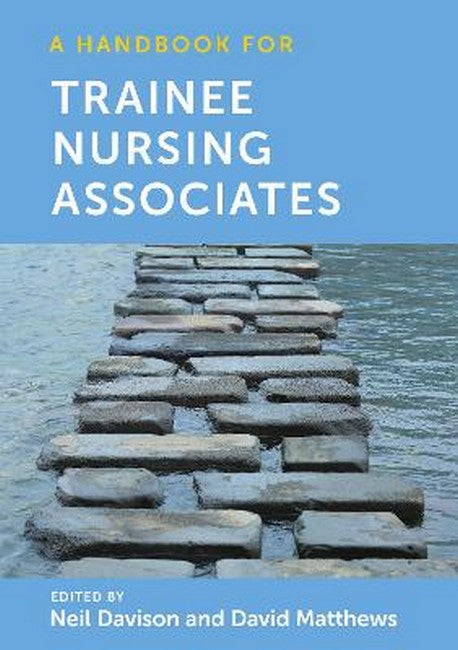Neil Davison worked in trauma and orthopaedics after the completion of his state registration and orthopaedic nursing qualifications in the 1970s and early 1980s. He lectured at Bangor University for two decades and has extensive experience of teaching drug calculations and numeracy to both pre- and post-registration students. He was made a Teaching Fellow at the university in 1999 and retired in 2012. Since then, Neil has continued to teach on healthcare courses in the further education sector and in the hospitals of North Wales. David is a Lecturer in health and social care at Bangor University, and is programme leader for its BA Health and Social Care, where he teaches issues and subjects relating to the social determinants of health and health policy, as well as supervising undergraduate and postgraduate dissertations. His research interests and publications focus on critical and materialist understandings of the welfare state and social policy, with a particular emphasis on the impact of neoliberalism and capitalism for health and mental health. In addition, he has an interest in the development and evolution of Welsh health policy during the era of devolution.
Request Academic Copy
Please copy the ISBN for submitting review copy form
Description
Preface; Acknowledgements; About the authors; Introduction: background and context Chapter 1: Study skills Neil Davison 1.1 Introduction 1.2 Check your study skills 1.3 Learning preferences 1.4 Getting organised 1.5 Finding and reading information 1.6 Participating in specific learning and assessment activities Chapter summary; Further reading; References Chapter 2: Professional skills Linda Bale 2.1 Introduction 2.2 The importance of communication in nursing 2.3 Team working and leadership 2.4 Leadership and management Chapter summary; Further reading; References Chapter 3: Values and ethics Anneyce Knight and Nevin Mehmet 3.1 Introduction 3.2 What are values and ethics? 3.3 Why are values and ethics relevant to nursing and my role as a nursing associate? 3.4 Virtue ethics in everyday healthcare 3.5 The four principles in everyday healthcare 3.6 Accountability Chapter summary; Further reading; References Chapter 4: Society and its impact upon health David Matthews 4.1 Introduction 4.2 Social determinants of health 4.3 Why society? Understanding your service users 4.4 Biomedical model 4.5 Social model 4.4 Social class, money and wealth 4.6 Gender: men, women and health 4.7 Ethnicity and health inequalities Chapter summary; Further reading; References Chapter 5: Psychology and health Graham Jones 5.1 Introduction 5.2 Psychology 5.3 Psychology of health 5.4 Philosophy of psychology 5.5 Approaches to health management 5.6 Holism 5.7 What makes us what we are? 5.8 Behaviour 5.9 Locus of control 5.10 Conclusion Chapter summary; Further reading; References Chapter 6: Public health and health promotion Anneyce Knight 6.1 Introduction 6.2 Why are public health and health promotion relevant to my role as a nursing associate? 6.3 What is public health? 6.4 History of public health 6.5 The structure of English public health 6.6 UK Health Security Agency 6.7 World Health Organization and global public health 6.8 The NHS Long Term Plan and national public health priorities 6.9 What is health promotion? 6.10 History of health promotion 6.11 The importance of the Ottawa Charter 6.12 Developing health literacy 6.13 Understanding some of the challenges to changing health behaviour Chapter summary; Further reading; References Chapter 7: Research and evidence-based practice Neil Davison and David Matthews 7.1 Introduction 7.2 The knowledge base of nursing practice 7.4 Evidence-based practice 7.5 Research 7.6 The hierarchy of evidence Chapter summary; Further reading; References Chapter 8: Mental health Angela Dingwall 8.1 Introduction 8.2 What do we mean by 'mental health'? 8.3 Stigma 8.4 Labelling 8.5 Mental health problems: biological, psychological and sociological causes 8.6 Mental health across the life course 8.7 Mental health conditions 8.8 Intervention and support Chapter summary; Further reading; References Chapter 9: Learning disability Josh Hodgson 9.1 Introduction 9.2 Learning disability - the broad picture 9.3 Comorbidities 9.4 Capacity 9.5 Communication 9.6 The role of behaviour 9.7 Mental health 9.8 Contemporary initiatives and drivers for change 9.9 Building a resource toolkit 9.10 The impact of Covid-19 on people with a learning disability Chapter summary; Further reading; References Index

